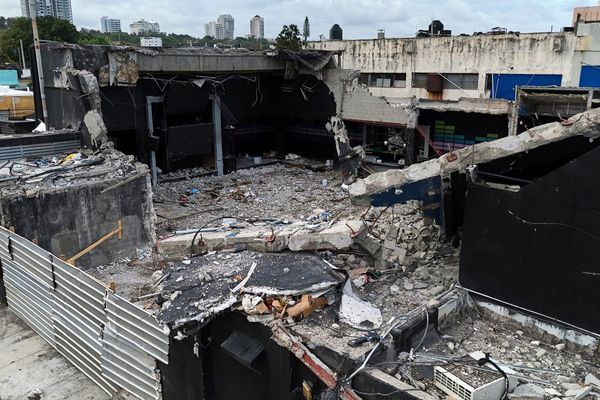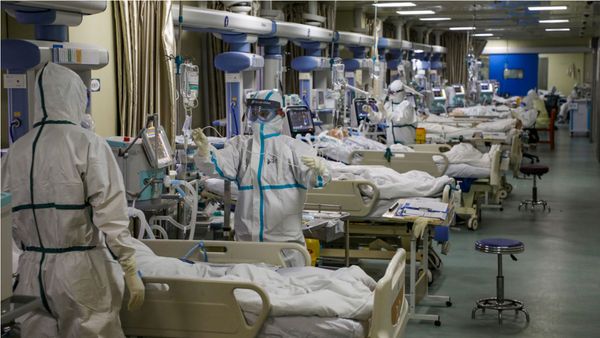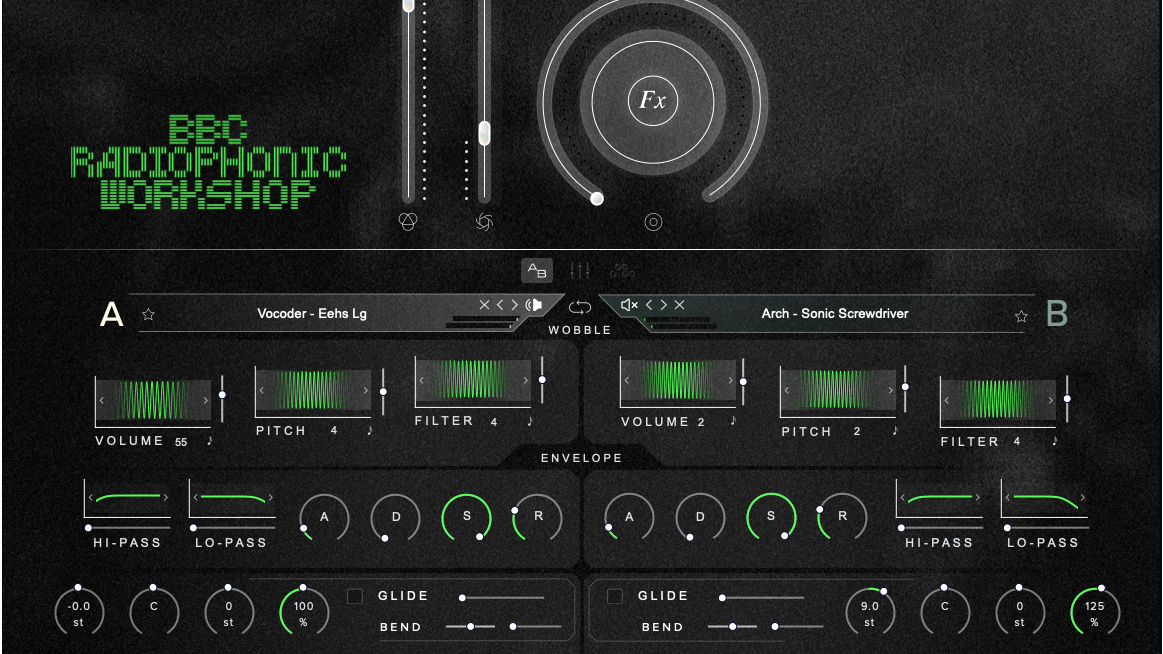
What is it?
If you have more than a passing interest in electronic music, you’ll likely be well versed with exactly what the BBC Radiophonic Workshop represented during its tenure from 1958 to 1998. It’s always cited for its contribution to Doctor Who, with theme music composed by Ron Grainer and ingeniously arranged by Delia Derbyshire. However, the workshop was responsible for so much more, both at the musical level, and in terms of breaking boundaries sonically.
During the Workshop's earlier years, much of the creativity stemmed from a lack of equipment. Just about all of the sounds emanated from sources that were recorded and spliced using tape, to form the unique effects and melodies which we heard.
It was a time-intensive process, that often had more in common with mathematics than music, drawing inspiration from the craft of music creation known as musique concréte.
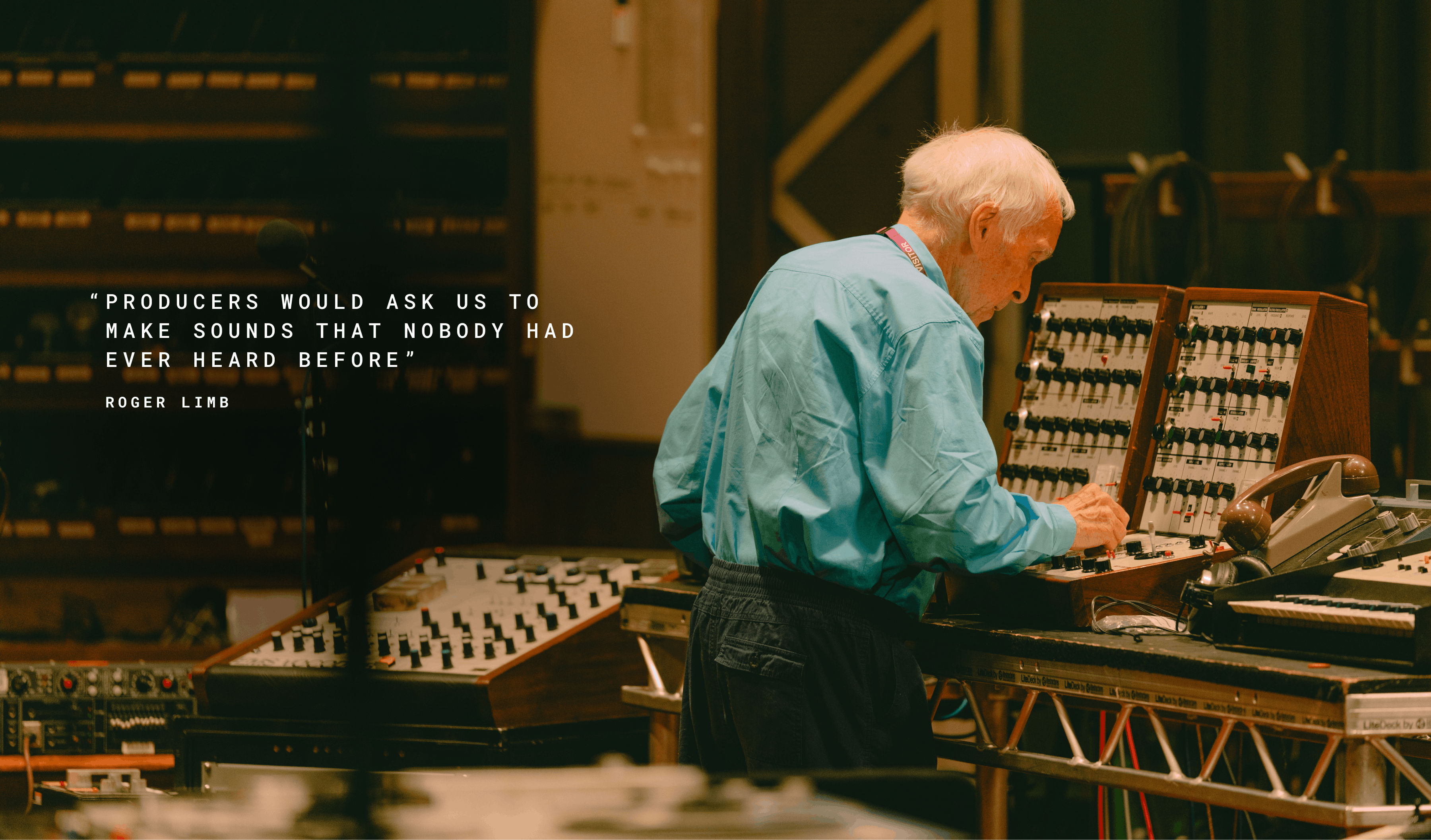
The magical archivist
With such a vast archive available, it feels long overdue that these amazing sonic constructs have yet to be placed in the hands of modern electronic musicians. Thankfully, Spitfire Audio has grasped the nettle, creating a unique package which includes many of the original archived sounds, alongside new sounds, created by original members of the Radiophonic Workshop at BBC’s Maida Vale studio, using both vintage and modern equipment.
Pricing
- Full price: £149 (Educational discount available)
Performance
The Radiophonic library operates from within Spitfire’s own Solar synth engine, which we have seen previously through the release of some other electronically orientated libraries.
As a first port of call, you can get a good feel for the library by trawling through the 98 included presets. This does highlight one of the first slight grievances with the Solar engine, which provides a relatively small window on the patch-inclusion world. It is possible to narrow the search, using search filters, but we’ve always felt that the patch display could be larger, and not just list-based.
Moving past this point, the content is undeniably superb. It’s refreshing to hear a terrific selection of sounds, drawn from both acoustic and electronic sources, which feel incredibly inspiring at first hearing. Many of these patches play around with the stereo image, playing out over time. There is plenty of percussive content, with some exceptionally big booms, alongside more atmospheric patches, and of course there is plenty of material that could fulfil melodic requirements too. It didn’t take us long to locate the patch called Super Sonic, recreating the classic sonic screwdriver sound from Doctor Who.
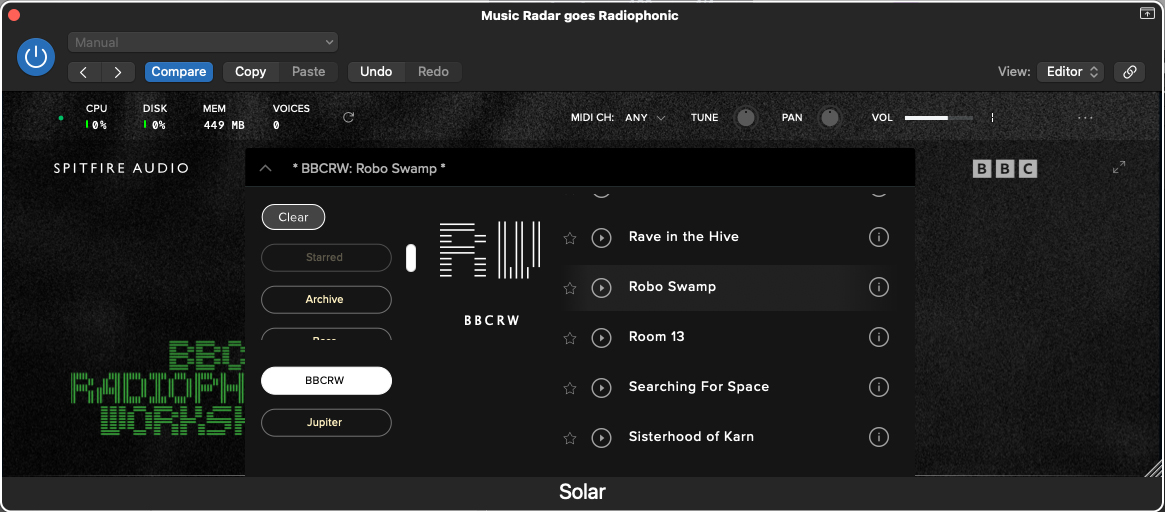
Patch creation
We wanted to explore the bare bones of the library, available from within the Solar engine. In essence, Solar provides a fairly regular two-partial construct, labelled as A and B. Within these two sections, you effectively have a synth voice, equipped with its own sample, filtering and envelope generator, as well as LFO modulation sources, and gate sequencing options too. These then feed a well-equipped global effects section, which provides all the basics, alongside some unique elements, such as granular control and tape saturation.
Diving into the samples themselves, the library is equipped with 1,087 sounds, many of which are drawn from the Radiophonic archive; these are prefixed by ‘Arch’, with many sounds being incredibly recognisable, particularly for anyone who grew up watching BBC programmes in the '70s or '80s. We recalled sounds from Blake 7, alongside numerous mentions in the patch list of the ‘Daleks’ and ‘Davros’.
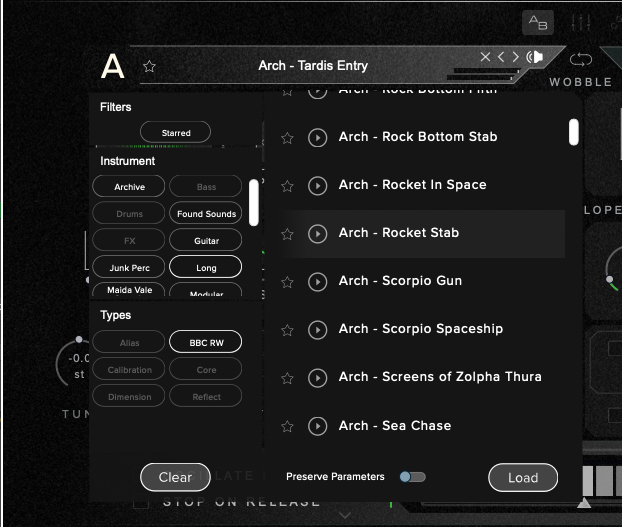
Bringing things a little more up to date, while maintaining vintage status, there are some great samples from a Roland System 100-M, ARP Odyssey & VCS3, created by the original members of the workshop. There’s also quite a collection of sounds generated by stringed instruments, such as guitars and mandolins. Scrapes, strums, and ebows are all available, with many of the more percussive sounds being multi-sampled across the keyboard register. There’s even an appearance from a vintage EMS Vocoder, with a beautifully eerie collection of electronic chorus sounds.
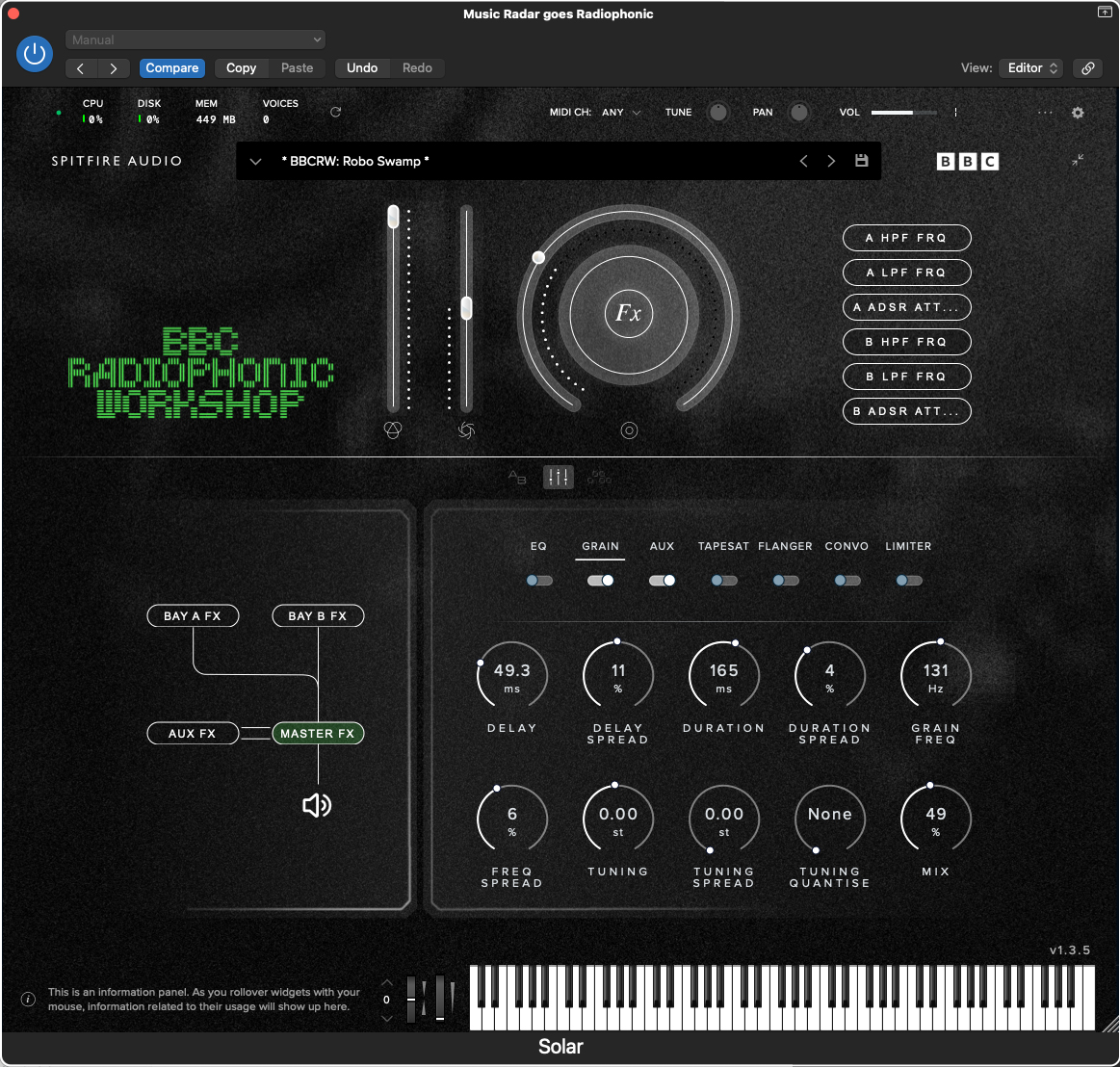
Once you have found your desired sample, the possibilities for resynthesis are comprehensive, thanks to the makeup of the Solar engine, although it’s fair to say that we found much of the beauty of this library within the original sounds themselves. There will be occasions when you want to use Solar, particularly for exploiting the stereo image, but we found an element of not wanting to gild the lily. These sounds were amazing when they were originally created, and sometimes you just want those colours to shine through unchallenged. One area that does excel though, is the potential for real-time control. This can elevate each sample and patches potential for musicality, through the use of Solar’s real-time parameter control section, albeit with the navigation of the singular large pot, which we’ve always thought would be better served as a number of faders.
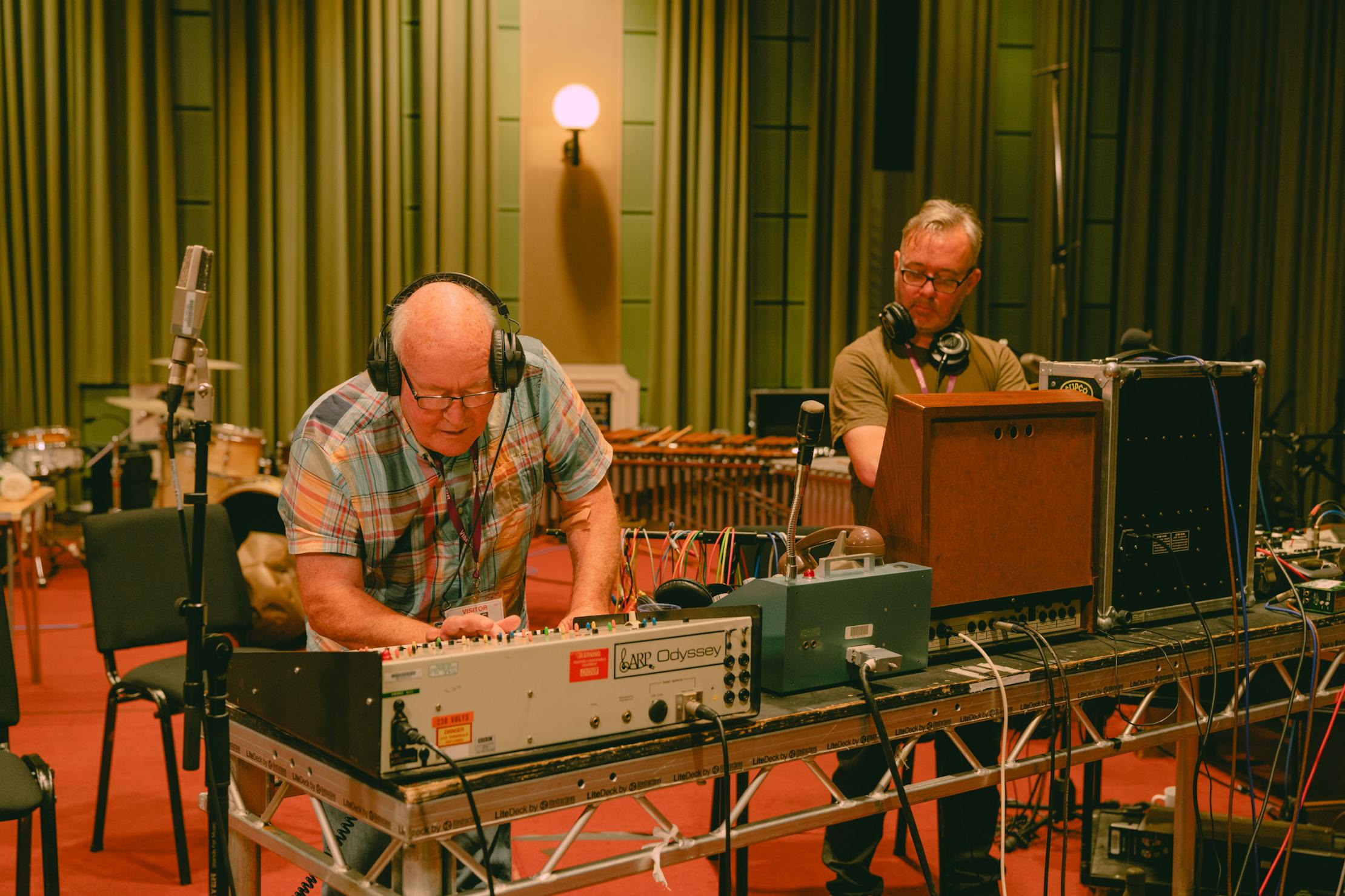
Verdict
It would be difficult to approach a library such as this, without viewing it through a pair of nostalgic glasses. If that is your particular take, you will feel thrilled and delighted in equal measure. However, the included sample content is not only unique but sonically amazing, as it always was. So many of these sounds tell a story, as they unwind overtime, and within the construct of the Solar engine, there is plenty of capacity for the creation of your own unique and highly impressive patches.
